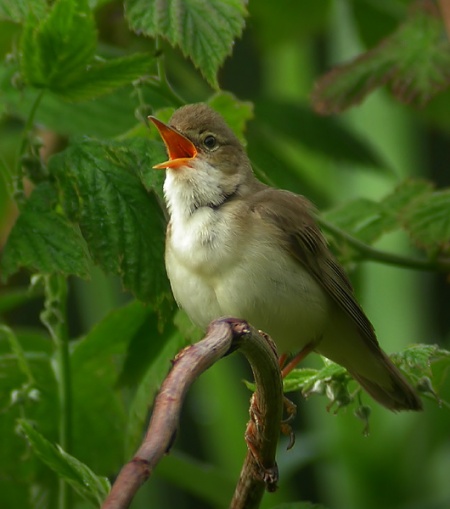| Line 2: | Line 2: | ||
[[Image:Marsh_Warbler.jpg|thumb|450px|right|Photo by jenygard]] | [[Image:Marsh_Warbler.jpg|thumb|450px|right|Photo by jenygard]] | ||
==Identification== | ==Identification== | ||
| − | + | Brown back and pale underparts. The sexes are identical, but young birds are yellower below. | |
| − | |||
| − | |||
| − | |||
==Distribution== | ==Distribution== | ||
| − | + | [[Europe]] and [[Asia]] | |
==Taxonomy== | ==Taxonomy== | ||
==Habitat== | ==Habitat== | ||
Found in areas of dense vegetation with taller bushes nearby. | Found in areas of dense vegetation with taller bushes nearby. | ||
==Behaviour== | ==Behaviour== | ||
| − | + | 3-6 eggs are laid in a nest in reeds or low vegetation. | |
| + | |||
| + | Diet includes insects, and occasionally berries in autumn. | ||
==External Links== | ==External Links== | ||
Revision as of 15:23, 17 October 2007
- Acrocephalus palustris
Identification
Brown back and pale underparts. The sexes are identical, but young birds are yellower below.
Distribution
Taxonomy
Habitat
Found in areas of dense vegetation with taller bushes nearby.
Behaviour
3-6 eggs are laid in a nest in reeds or low vegetation.
Diet includes insects, and occasionally berries in autumn.
External Links
Bird Song
<flashmp3>Acrocephalus palustris (song).mp3</flashmp3>
Listen in an external program




